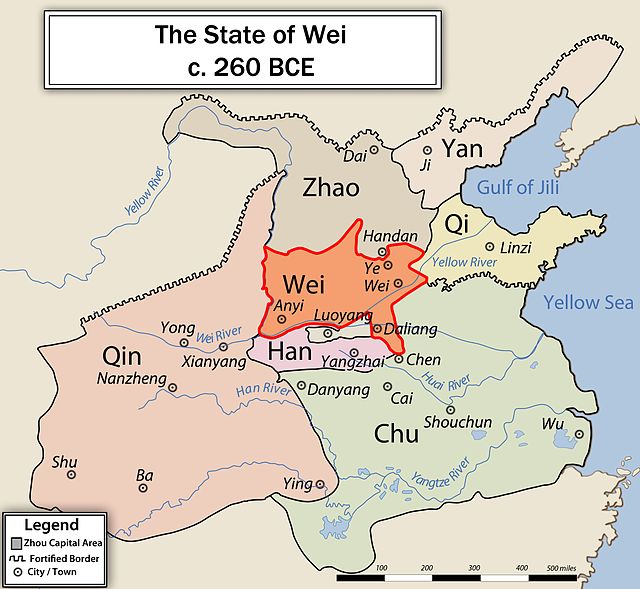Wei was one of the seven major states during the Warring States period of ancient China. It was created from the three-way Partition of Jin, together with Han and Zhao. Its territory lay between the states of Qin and Qi and included parts of modern-day Henan, Hebei, Shanxi, and Shandong. After its capital was moved from Anyi to Daliang during the reign of King Hui, Wei was also called Liang.
Wei (state)
Ancient Chinese states were dynastic polities of China within and without the Zhou cultural sphere prior to Qin's wars of unification. They ranged in size from large estates, to city-states to much vaster territories with multiple population centers. Many of these submitted to royal authority, but many did not—even those that shared the same culture and ancestral temple surname as the ruling house. Prior to the Zhou conquest of Shang, the first of these ancient states were already extant as units of the preceding Shang dynasty, Predynastic Zhou, or polities of other cultural groups. Once the Zhou had established themselves, they made grants of land and relative local autonomy to kinfolk in return for military support and tributes, under a system known as fengjian.
Selected states of the Western Zhou dynasty
The seven Warring States c. 260 BCE



